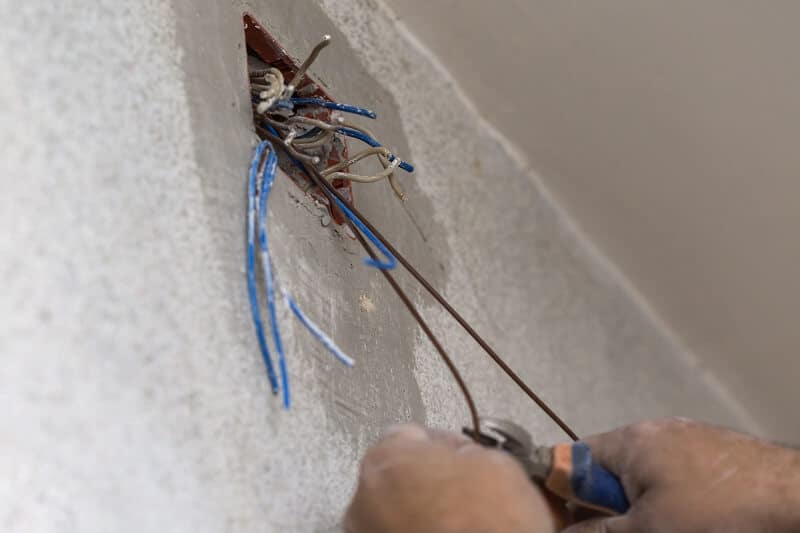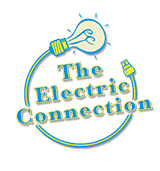 Deciding to rewire your home does not come easily, and there’s no surprise why. Aside from the fact that home rewiring projects dig deep into your pockets, there’s the disruptive nature of the project to consider. But despite what seems like two distinct disadvantages, here are the many benefits that outweigh them and support your decision for home rewiring.
Deciding to rewire your home does not come easily, and there’s no surprise why. Aside from the fact that home rewiring projects dig deep into your pockets, there’s the disruptive nature of the project to consider. But despite what seems like two distinct disadvantages, here are the many benefits that outweigh them and support your decision for home rewiring.
- New wiring, new electrical power experience
- A dependable electrical system
- No more flickering lights, burning smells, or shortage of power
- More room to add new appliances and remodel
- Save on energy bills
- Improved electrical safety
- Reduce the chance of a power cut
- Ensure electrical wiring lifespan
- Prevent damage to your home appliances
- Increase home resale value
While a home rewire is an option for many reasons, not just any homeowner should rewire their home. There are conditions under which a home rewire is needed and they include:
- If your home is old, and the wiring is outdated
- You have hazardous aluminum wiring
- You are renovating
- Your electrical system is unsafe with several faults, flickering lights, and so on.
- Your electrical wiring has insufficient capacity
When you are experiencing any issues with your electrical system, it’s advisable to call on a professional Los Angeles electrician to inspect your wiring and point out the issue. The electrician will advise on if a home rewire is needed.
How to rewire room by room
- Make a list – Make a list of the appliances you have now and those you would like to add in a few years. It’s best to think as far as 25 years. This is because most rewiring projects are done every 2 decades. You can consider installations like:
- Lighting and ceiling fans
- HVAC
- Kitchen appliances
- Water heater
- Devices such as wheelchair lifts and stairlifts
- Home office electronics
- Hot tub, spa, sauna or swimming pool
- Entertainment systems
- Get an electrical building permit – The person who will perform the rewire project has to pull a permit before the work can start. If a rewiring project is carried out without the necessary permit, you might have to take it all down later.
- Get to work rewiring room by room – Shut off the electrical power to the home, disconnect circuits, and disconnect wires from electrical boxes. Draw a plan of your new circuitry. Cut holes in the drywall to install new outlets and switches. Run the new wires through the backs of the electrical boxes and staple lateral runs of wire with wire staples. Run the wiring for the new devices and connect each new circuit.
Attempting a rewiring project yourself is no joke, and it gets worse if you have no electrical experience or knowledge. It is always better to leave such demanding electrical services to professional electricians. Hiring a professional saves money in the long run, guarantees electrical safety, and is stress-free for the homeowner.
Be sure to test all your electrical components after the project and ascertain they are working fine. If you opted for DIY, ensure a professional electrician inspects the wiring room by room afterwards.
Contact A Local Los Angeles Electrician
The Electric Connection is proud to employee some of Los Angeles’ greatest electricians. If you need help with a house rewire in Los Angeles or the surrounding areas, be sure to give us a call. We have even created an online form where you can get a free house rewire quote delivered to your inbox in minutes. Don’t take a house rewire project on yourself, give us a call and we can help!





 It’s just annoying to live in a home that does not have enough power. The voltage will drop frequently, and this can be damaging to your electronics. Situations like this indicate that you need to upgrade your electrical panel. Other reasons why you might need to upgrade your panel include:
It’s just annoying to live in a home that does not have enough power. The voltage will drop frequently, and this can be damaging to your electronics. Situations like this indicate that you need to upgrade your electrical panel. Other reasons why you might need to upgrade your panel include: Home appliances are necessary for comfort and efficiency. They literally make life easier for everyone. The only problem is that they all demand electricity to run and some use up much more power than others. Hence, while you enjoy the convenience of warm water or cool air regularly, your electric bills keep rising higher.
Home appliances are necessary for comfort and efficiency. They literally make life easier for everyone. The only problem is that they all demand electricity to run and some use up much more power than others. Hence, while you enjoy the convenience of warm water or cool air regularly, your electric bills keep rising higher.  Owning a home comes with several benefits including the flexibility to make changes as you please. But it’s a different thing altogether when you are one of the millions of people who rented an apartment and have limited control over the building. High monthly electricity bills can threaten that sweet feeling of having your own space and freedom.
Owning a home comes with several benefits including the flexibility to make changes as you please. But it’s a different thing altogether when you are one of the millions of people who rented an apartment and have limited control over the building. High monthly electricity bills can threaten that sweet feeling of having your own space and freedom.  Regardless of your socio-economic class, every one of us could benefit from a little frugality in our lives. If you keep track of your spending and compare the figures over a long time, you find that you spend more on certain things you believed were cheap. In fact, according to the energy department, a regular family spends an average of $2,200 on utilities alone within a year.
Regardless of your socio-economic class, every one of us could benefit from a little frugality in our lives. If you keep track of your spending and compare the figures over a long time, you find that you spend more on certain things you believed were cheap. In fact, according to the energy department, a regular family spends an average of $2,200 on utilities alone within a year. Working as an electrician you can expect to do everything from installing to maintaining all electrical and power systems found in homes, businesses, or factories. If you take a look a the wiring or control equipment found in a structure, there’s a good chance, as an electrician, you will be working on it. Wherever electricity flows, you can find an electrician.
Working as an electrician you can expect to do everything from installing to maintaining all electrical and power systems found in homes, businesses, or factories. If you take a look a the wiring or control equipment found in a structure, there’s a good chance, as an electrician, you will be working on it. Wherever electricity flows, you can find an electrician. If you don’t have an attic fan installed in your home, you have probably wondered if one would work for you. You’ve probably heard about
If you don’t have an attic fan installed in your home, you have probably wondered if one would work for you. You’ve probably heard about  There is actually a lot that goes into deciding where to install a bathroom fan. If you have a smaller bathroom, this may be an easy decision, but larger bathrooms require some thinking and math. Design architects and builders work hard to ensure that bathroom fans are placed in the right spot not only for safety and proper ventilation but also for the aesthetics.
There is actually a lot that goes into deciding where to install a bathroom fan. If you have a smaller bathroom, this may be an easy decision, but larger bathrooms require some thinking and math. Design architects and builders work hard to ensure that bathroom fans are placed in the right spot not only for safety and proper ventilation but also for the aesthetics.